
Nerissa Myers and Brianna Cherry are the same age & first cousins who grew up right next to each other in Petal, Mississippi. They both grew up playing basketball, volleyball, and slow pitch softball; in fact, in Mississippi, the high schools play slow pitch in the Spring and fastpitch in the Fall, or vice-versa; so Nerissa & Brianna did not formally begin their fastpitch softball careers until high school.
Nerissa is 5’4” and the point guard, setter and shortstop; Brianna is 5’10” and plays the post, spikes and roams centerfield. Both had plenty of talent and athleticism and competitive fire: the challenge upon entering college was DEVELOPING THEM AS “FAST” PITCH HITTERS in a 4 year timeframe.
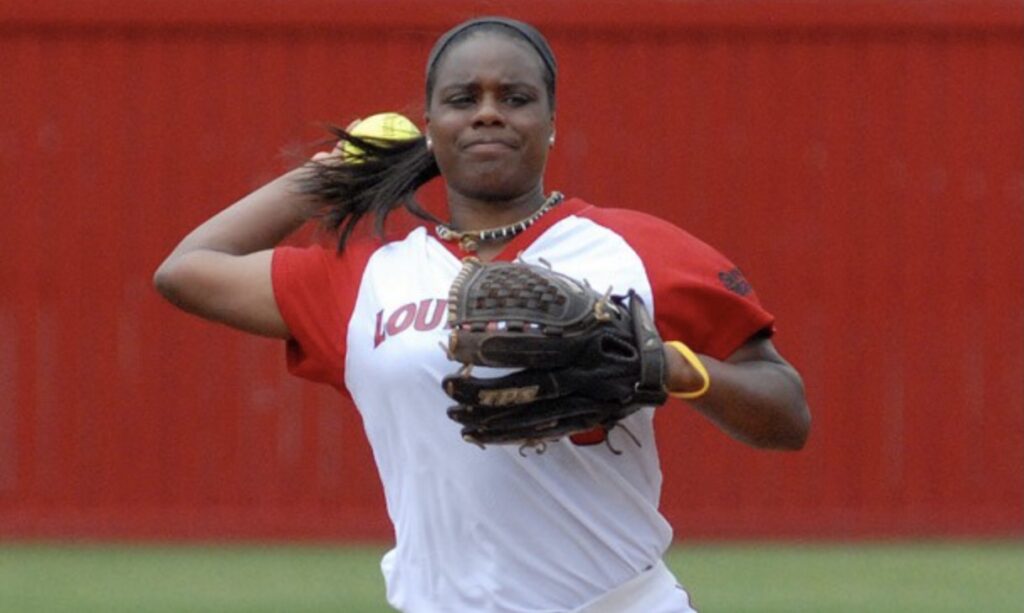
As a freshman in 2010 at UL, Nerissa was comfortable playing defense in college, but she struggled mightily offensively — hitting .247 with only a .354 on base percentage, striking out over 30 times, and only 31 runs scored, with only 1 home run.
Compare that to her Junior season, where she had a .400 batting average, scored 83 runs, 79 RBI, 13 home runs, .514 on base %, struck out only 13 times in 239 plate appearances, and hit the memorable grand slam in the NCAA Lafayette Regional against Stanford. Myers was selected a 2012 NFCA ALL-AMERICAN, and was on the WATCH LIST for PLAYER OF THE YEAR. (Read the entire article by clicking on the link below).
https://sunbeltsports.org/news/2013/2/1/GEN_6569.aspx
Nerissa only started 42 games her senior season because she missed 18 games in the middle of the season due to a broken ankle.
BELOW IS A HR NERISSA’s JUNIOR SEASON AT UL.
https://www.facebook.com/AUProSports/videos/nerissa-myers-hr/245206656934719/
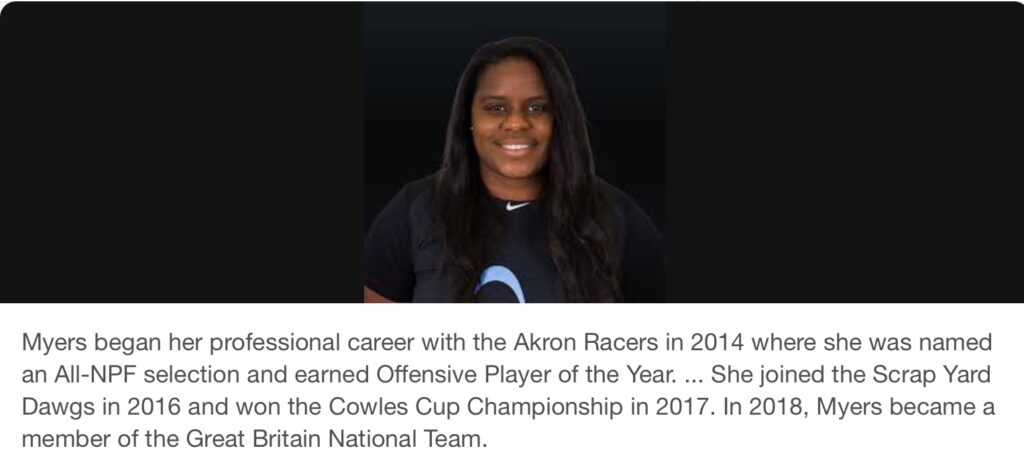
Brianna also struggled with the transition from high school to college softball; and learning how to go from “SLOW” PITCH to “FAST” PITCH was not just as simple as it was to do in high school.
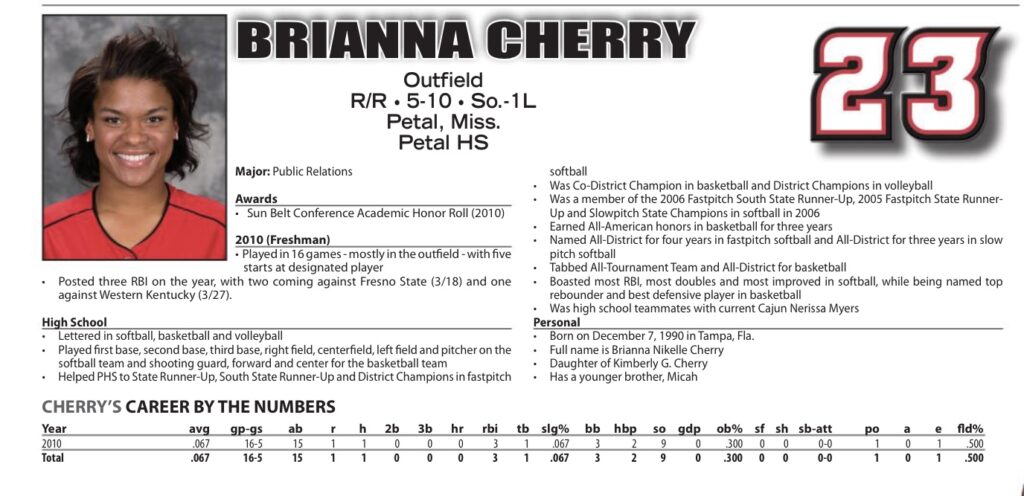
Compare her 2010 stat line to her senior 2013 season where she hit .393 batting average (75-191); 65 runs scored; 55 RBI; 14 home runs.

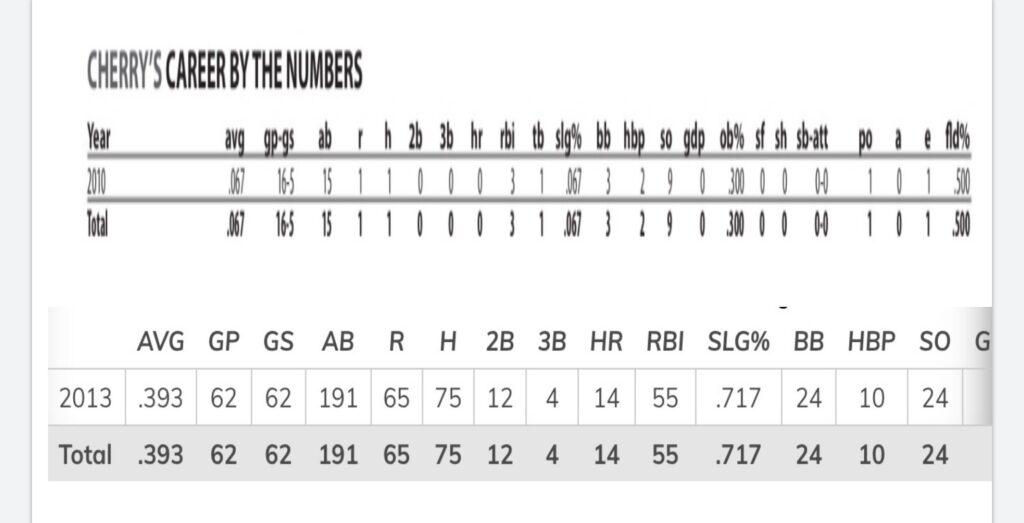
TRUST THE PROCESS OF DEVELOPMENT
- In order to build a totally new & different movement pattern after the age of puberty, involves knowing about & using “ATTRACTORS” (see article #1 in this series). SKILL ACQUISITION by using the right “ATTRACTORS” was the first step in the transformation.
The swing mechanics used in slow pitch softball are considerably different than the mechanics of high level fastpitch & baseball hitters. - When to use which drills &/or gadgets, assessing & prescribing functional movement protocols, when & where & what to constrain to build a new movement “feel” & knowing how to manage the degrees of freedom issues is as much of an art as it is a science and requires “real” experience & teaching skills. Too much here & not enough there and the whole pattern is out of whack. Competence in coaching is about being an “artist” & “master of the subject matter”.
- Teaching the Central Nervous System a totally different “rate of force development”, —engraining into her memory a totally different data base & pitch recognition pattern —took thousands and thousands of repetitions; and trying to coordinate the new movement patterns along with creating a new visual data base required “live” situations where Brianna was forced to move differently PLUS make the right decisions on every swing and incoming pitch. Lots of time & lots of manpower & lots of devotion by both the athlete and the coaching staff — that’s a “REAL” LEARNING ENVIRONMENT that combined expertise AND dedication.
- Learning a totally new/different hitting “approach” and hitting “mindset” going from “slow” pitch to “fast” pitch was truly remarkable. That took lots of video & chalkboard discussions, simulated at bats, live scrimmaging, and lots of visualization/role playing/hypothetical scenarios, etc. You have to prepare for every situation & scenario BEFORE YOU ACTUALLY go out on the stage to perform which took a detailed, precise, individualized “lesson plans” which were updated & reviewed weekly.
- Completing the transformation and accomplishing the above in basically 2 seasons is phenomenal & extraordinary. For baseball readers— that’s like going from A ball to the MLB in a 2 season timeframe. Unheard of. (WATCH THE VIDEO BELOW ON THE LEVEL OF DIFFICULTY & THE TIME CONSTRAINTS IMPOSED ON A COLLEGE FASTPITCH HITTER VERSUS A MLB HITTER.
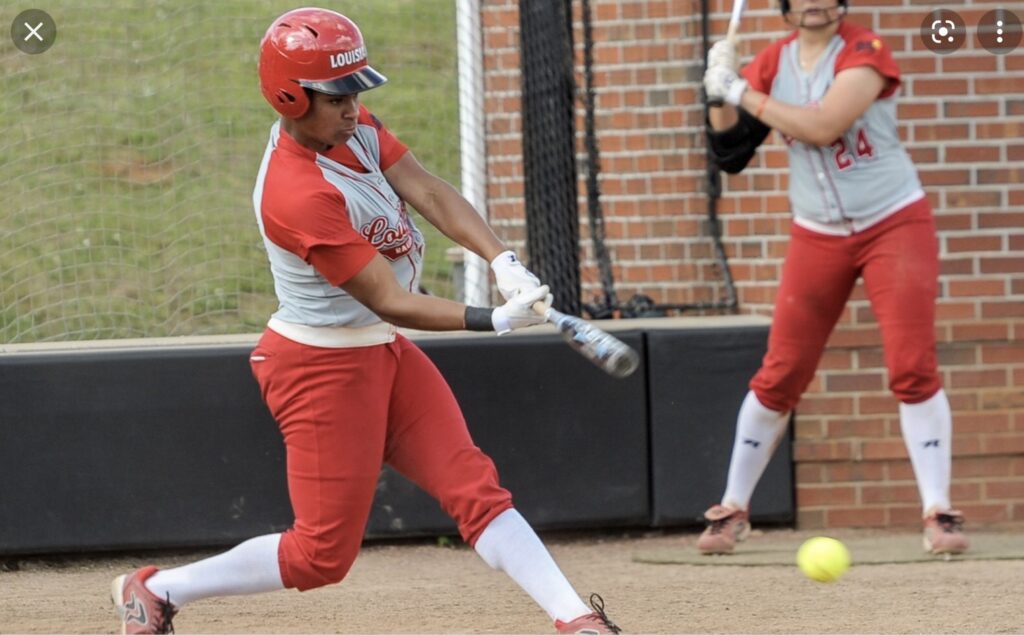
The learning environment that allowed these young women to thrive & blossom is like no other in college softball at the time.
The training protocols and drills & hitting gadgets were unique & proprietary to that group of players exclusively.
The individualized planning & meticulous attention to detail gave each player a chance to reach their God-given potential.
The motor learning concepts/principles we had in place at UL during that period are all still state of the art and supported by the research.
During Nerissa & Brianna’s four years as Cajuns from 2010-2013, there were not only memorable moments like home runs or individual awards, there were also impressive/consistent team achievements: Back-to-back NFCA Lead-Off Champions in 2012 & 2013; 2013 JUDI GARMAN CHAMPIONS, 4 STRAIGHT NCAA APPEARANCES, 3 REGIONAL CHAMPIONSHIPS (2010, 2012, 2013)—WINNING BOTH BATON ROUGE REGIONALS & BEATING LSU IN BOOKEND YEARS OF 2010 & 2013, 3 SUPER REGIONAL APPEARANCES!
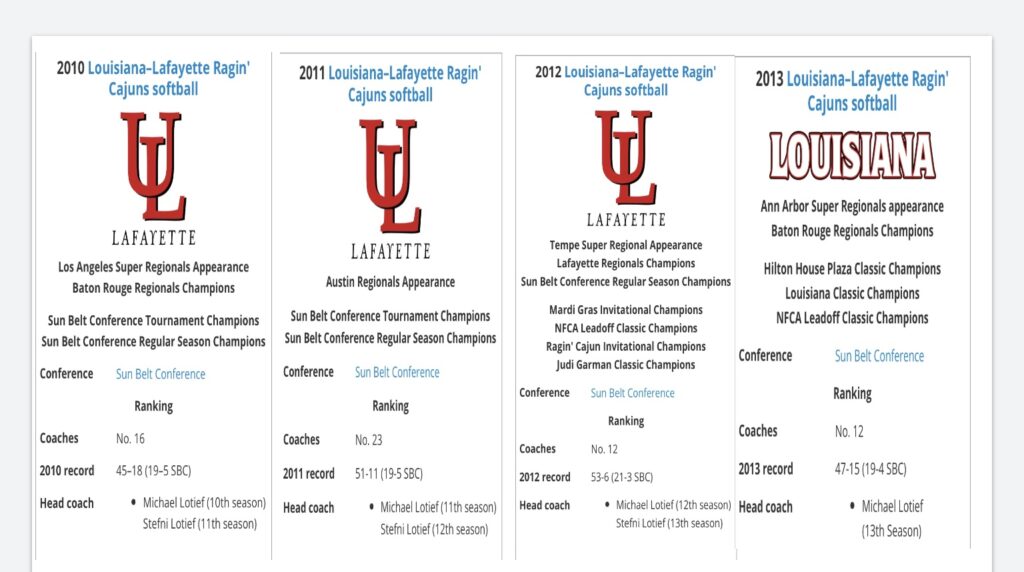
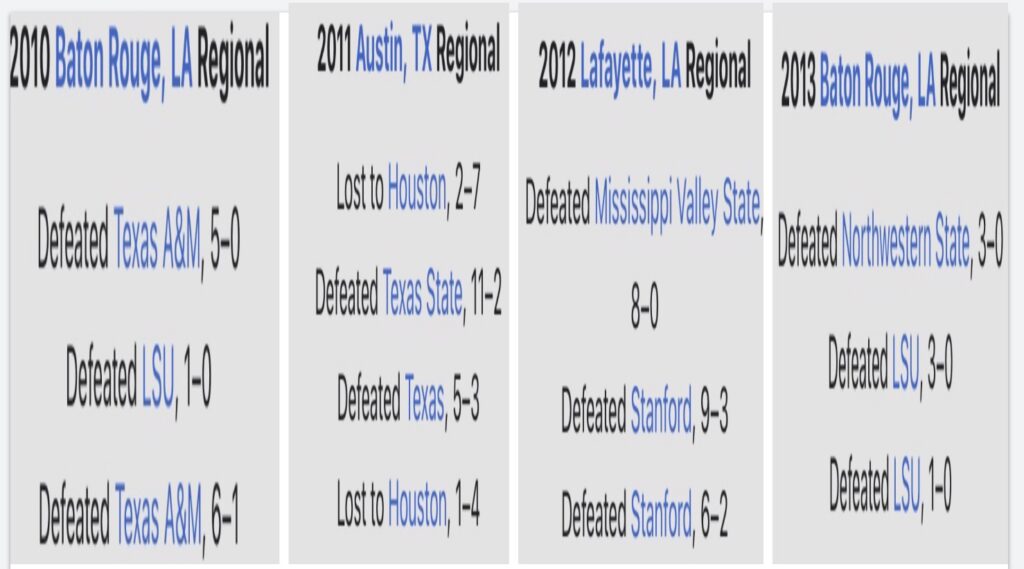
Not bad at all for a couple of first cousins who started out playing slow pitch softball in Petal, MS in grandma’s, Mary Myers, backyard.
PURSUE EXCELLENCE & WIN THIS PITCH!
About the Author

Mike Lotief coached 17 successful years as either the head softball coach or co-head softball coach with his wife Stefni Whitton Lotief at the University of Louisiana from 2002-2017 with an overall coaching record of 731-176 (80.6 winning percentage). Every season, the Ragin Cajuns softball team advanced to the NCAA tournament and also advanced to three (3) Women’s College World Series (2003, 2008, 2014) and from 2012-2016 advanced to five (5) straight NCAA Super Regionals. Coach Lotief produced over 40 All American selections and his 2017 team lead the nation in scoring and was ranked in the Top 10 in home runs, slugging percentage, on base percentage.
The coach is a cancer survivor (twice) and was the first person in the U.S. to receive the Pro Trach device. Mike and Stefni spearheaded and raised the funding to build the new softball stadium in 2009 and the new softball indoor hitting facility in 2015. They are proud parents to Chelsea, who played softball and graduated from the Univ. of Louisiana in 2018, and Andrew, who is a junior at Louisiana studying Mechanical Engineering.
Previous Articles in this Series
- The Mental Swing Attractors: Failure Cannot Break You (Nov. 11, 2021)
- Training Insights: “Swing Attractors” by Coach Mike Lotief… the Flaws of Pelvic Loading (Nov. 9, 2021)
- The Mental Swing Attractors: Push Yourself… You Don’t Have to Be #1 to BE #1! (Nov. 4, 2021)
- Training Insights: “Swing Attractors” by Coach Mike Lotief… Pelvis Loading, Part 2—The Planes of Movement (Nov. 2, 2021)
- The Mental Swing Attractors: Remove the Rope from Your Ankle & Get Rid of the Limiting Beliefs! (Oct. 28, 2021)
- Training Insights: “Swing Attractors” by Coach Mike Lotief… Pelvis Loading, Part 1—It’s All in the Hips (or Somewhere Deep Below) Oct. 26, 2021
- The Mental Swing Attractors: Champions are Developed by Devotion & Discipline! (Oct. 21, 2021)
- Training Expertise: “Swing Attractors”… the Secrets of Power Hitting by Coach Mike Lotief (Oct. 19, 2021)
More About Mike Lotief
- Why Michael Lotief is a Legendary Coach? by Jay Patel
- The Secret To Michael Lotief’s Success. By Jay Patel
- Michael Lotief Fights for Rajin’ Cajuns by Graham Hays ESPN
- Michael Lotief: Taking His Sport to New Heights by Neha Kapoor
- For the Love of the Game: A Look at Ragin’ Cajun Softball’s Power Couple
- How Louisiana-Lafayette’s Michael Lotief Develops Hitting Gems by Graham Hays ESPN
